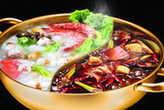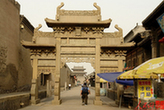Lacquer engraving, also called "lacquer carving", is a traditional Chinese handicraft presented by painting the objects with multi-layers and engraving the lacquer layer to form various decorated patterns. Wooden objects are the most common, with vermeil as the principal color of lacquer. Lacquer engraving process is complicated. Even the most common lacquerwork cannot be finished without undergoing at least nine working procedures, which include body-making, enameling, backing, painting, engraving and polishing. Lacquerwork is characterized by thin body, light weight, gorgeous patterns, as well as firmness and durability. Its types range from bottle, pot, box, tray, tea set, smoking set and wine accessories to wall panel, folding screen, wall picture, three-dimensional birds and beasts, and small ornaments.
Traditional Chinese lacquerwork has a time-honored history. It was proved to be used early in the Xiayu Period over 4200 years ago. Lacquer engraving technique is derived from the Tang Dynasty and experienced improvement in the Ming and Qing Dynasties on the basis of inheriting the styles prevalent in the Song and Yuan Dynasties. It had the golden age in the Ming Dynasty when the technique of lacquer engraving reached such a high level that in Beijing, the capital of the Ming Dynasty, a government-run lacquer engraving workshop named "Orchard Plant" was specially established, which was specialized in making lacquerwork for the imperial court. Afterwards, being inherited and developed by lacquer engraving handicraftsmen in Beijing, lacquer engraving technique attained continuous improvement and was finally developed to be a kind of industrial arts with distinctive Beijing features.
With solemn designs, sedate colors and exquisitely engraved decorations, the lacquerwork perfectly integrates the fine characteristics of lacquer and the ancient exquisite engraving craft. It is endowed with supreme artistic values and is an oriental treasure and artistic prime exclusively possessed by China.
Editor: Liu Xiongfei





Why not rent a boyfriend, or girlfriend to please parents during the Spring Festival?